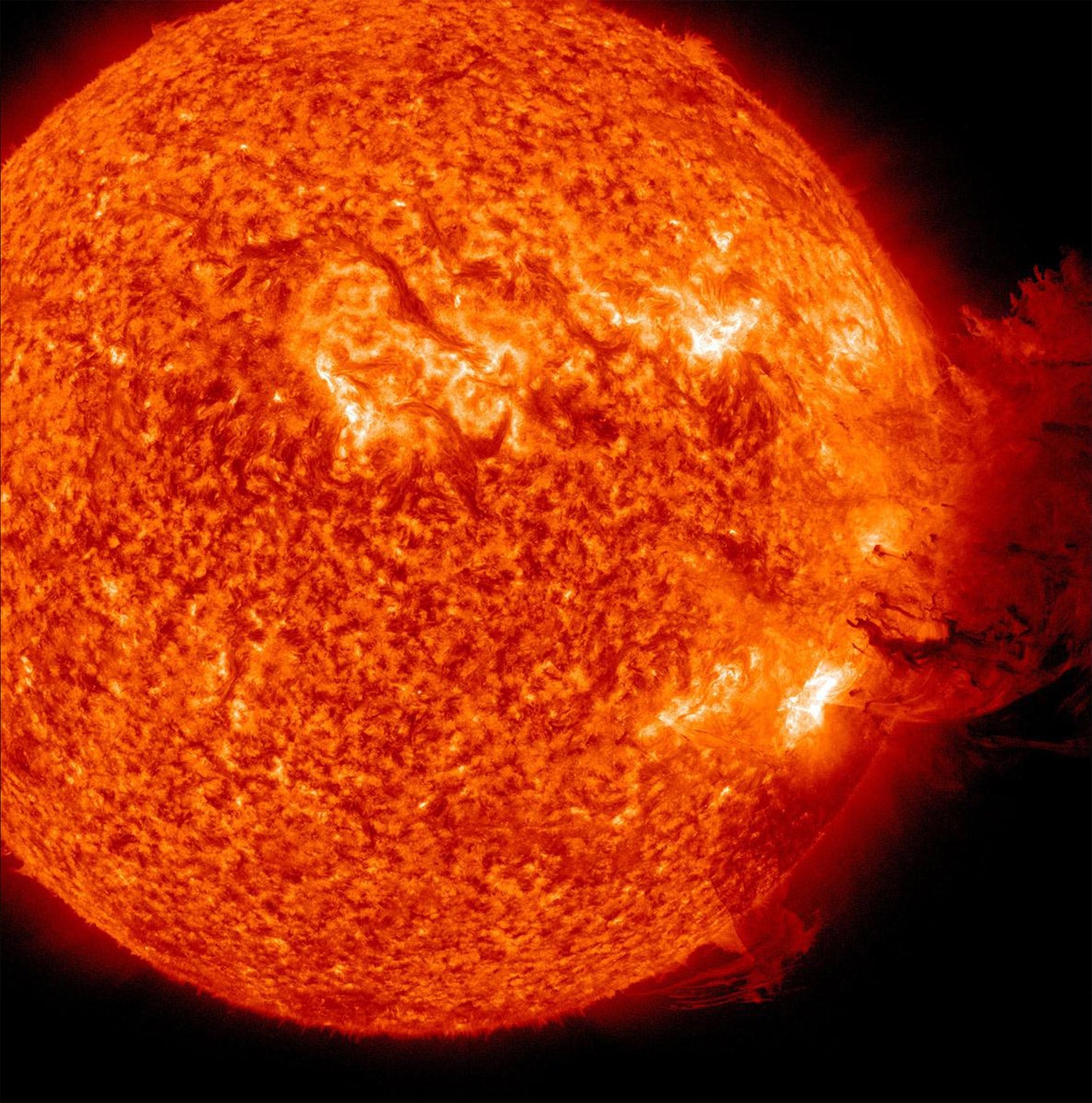A solar 'superstorm' is coming and we'll only get 30-minute warning
They cause devastation, occur every 150 years – and the last one was in 1859

Your support helps us to tell the story
From reproductive rights to climate change to Big Tech, The Independent is on the ground when the story is developing. Whether it's investigating the financials of Elon Musk's pro-Trump PAC or producing our latest documentary, 'The A Word', which shines a light on the American women fighting for reproductive rights, we know how important it is to parse out the facts from the messaging.
At such a critical moment in US history, we need reporters on the ground. Your donation allows us to keep sending journalists to speak to both sides of the story.
The Independent is trusted by Americans across the entire political spectrum. And unlike many other quality news outlets, we choose not to lock Americans out of our reporting and analysis with paywalls. We believe quality journalism should be available to everyone, paid for by those who can afford it.
Your support makes all the difference.A solar "superstorm" could knock out Earth's communications satellites, cause dangerous power surges in the national grid and disrupt crucial navigation aids and aircraft avionics, a major report has found.
It is inevitable that an extreme solar storm – caused by the Sun ejecting billions of tonnes of highly-energetic matter travelling at a million miles an hour – will hit the Earth at some time in the near future, but it is impossible to predict more than about 30 minutes before it actually happens, a team of engineers has warned.
Solar superstorms are estimated to occur once every 100 or 200 years, with the last one hitting the Earth in 1859.
Although none has occurred in the space age, we are far more vulnerable now than a century ago because of the ubiquity of modern electronics, they said.
"The general consensus is that a solar superstorm is inevitable, a matter not of 'if' but 'when?'," says a report into extreme space weather by a group of experts at the Royal Academy of Engineering in London.
In the past half century, there have been a number of "near misses" when an explosive "coronal mass ejection" of energetic matter from the Sun has been flung into space, narrowly bypassing the Earth.
In 1989 a relatively minor solar storm knocked out several key electrical transformers in the Canadian national grid, causing major power blackouts.
Similar solar storms significantly increased atmospheric radiation levels in 1956, 1972, 1989 and 2003, the experts found.
Professor Paul Cannon, who chaired the academy's working group on solar storms, said that the Government should set up a space weather board to oversee measures aimed at minimising the impact of solar storms.
"A solar superstorm will be a challenge but not cataclysmic. The two challenges for government are the wide spectrum of technologies affected today and the emergence of unexpected vulnerabilities as technology evolves," he said.
"Our message is, 'Don't panic, but do prepare'. A solar superstorm will happen one day and we need to be ready for it.
"Many steps have already been taken to minimise the impact of solar storms on current technology… We anticipate that the UK can further minimise the impact," he added.
Minor solar storms hit the Earth on a regular basis, but these are far less powerful than the 1859 event named after the British astronomer Richard Carrington, which was the last true solar superstorm.
A similar event today would put severe strain the electricity grid, where transformers are particular vulnerable to power surges, as well as degrading the performance of satellites, GPS navigation, aviation and possibly the mobile phone network, particularly the new 4G network, which relies on GPS satellites for timing information.
"Satellites are certainly in the front line of a superstorm. They are part of our infrastructure and we have concerns about their survival in a solar superstorm," said Keith Ryden, a space engineer at Surrey University.
Join our commenting forum
Join thought-provoking conversations, follow other Independent readers and see their replies
Comments